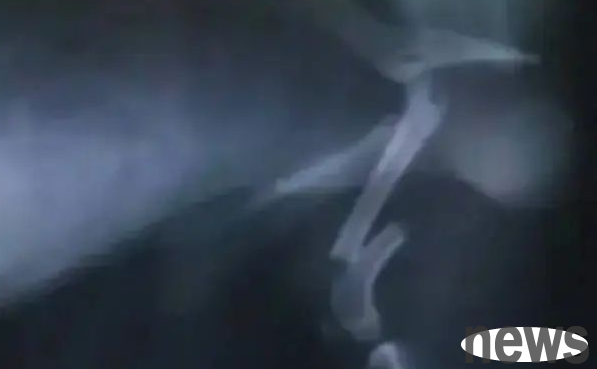Dogs are prone to fractures, such as falling, heavy objects pressing, muscle traction, being hit, running, and jumping, etc., which may cause fractures to the dog. The dog's fracture needs to be sent to the hospital for examination, to diagnose t...
Dogs are prone to fractures, such as falling, heavy objects pressing, muscle traction, being hit, running, and jumping, etc., which may cause fractures to the dog. The dog's fracture needs to be sent to the hospital for examination, to diagnose the fracture site and fracture condition, and then a specific treatment plan is implemented. Leg fractures are mostly caused by trauma and intense exercise. If the situation is mild, you can take a fixed form to promote recovery.
For comminuted fractures caused by car accidents and falls, they need to be treated through surgical procedures, and may be directly amputated if necessary.

1. Self-judgment of dog fractures. The unique symptoms of dog fractures are: deformation, displacement at both ends of the fracture (such as angular displacement, longitudinal axis displacement, lateral displacement, rotation displacement, etc.), and the affected limb is in abnormal positions such as shortening, bending, and extension. The second is abnormal activities of the dog. For example, when the affected limb is loaded or passively exercises, abnormal activities such as flexion and rotation occur (but the fractures of the ribs and vertebrae are not obvious). Bone friction sounds can be heard at the broken bone end, and symptoms such as bleeding, swelling, pain and dysfunction can also be seen. Open fractures are often accompanied by major trauma, bleeding and bone fragments of soft tissue. At this time, the diseased dog has obvious systemic symptoms, such as refusal to eat, pain and anxiety, and sometimes body temperature rises. The diagnosis can be confirmed based on the history of trauma and local symptoms. If necessary, the pet baby will be subjected to X-ray examination or photographed. 2. Can I heal myself after a fracture? Dogs may not be able to heal themselves if they have a fracture. Usually, if a dog has a fracture, the best treatment plan is surgical treatment, postoperative infusion to prevent inflammation and analgesia, restrict exercise and orally to promote bone healing; if you are unwilling to operate, it is recommended to take orally or inject anti-inflammatory and analgesic drugs, and you need to be kept in a cage, but there may be poor prognosis, such as lameness, bone hyperplasia, etc. If you are pressed by a car, fracture of the tibia and fibula, or pelvic fracture, and leave it alone, the dog may be unable to stand up and paralyzed in the hind limbs. If a dog is crushed by a car, he should take it to the hospital for a check-up in time, take an X-ray or B-ultrasound to see if the dog's spine is damaged, whether there is internal bleeding, or internal organs damaged, and then see if there is any bladder. If there is internal bleeding, you can draw it out and then give it a hemostatic injection for treatment. 3. Emergency treatment after fracture (1) Emergency aid: It should be carried out at the onset to prevent the fracture end of the fracture or serious complications when moving the pet dog. Emergency aid includes: 1. Stop bleeding, ligating bandages, cloth strips, ropes, etc. above the wound to stop bleeding, applying iodine wine to the affected area, and removing the cloth iodine-like sulfonamide powder inside. Second, after temporary bandaging and fixing of the fracture, it is immediately sent to the veterinary clinic for treatment. (2) Repair: Take horizontal lying on Baoding and repair under local anesthesia. When the fracture of the limb is displaced, the assistant can be pulled along the axial distal end of the limb to straighten the displaced fracture so that the two fracture ends are properly reset. At this time, you should pay attention to whether the limbs are normal and whether the two limbs are the same length. (3) Fixation: Perform general cleaning of the affected area of non-open fractures. After general treatment, the wound is removed from iodine-like sulfonamide powder and then installed with gypsum bandage or small splint to fix it. When fixing, cotton or cotton pads should be filled to prevent friction. After fixation, try to minimize exercise. You can exercise appropriately after 3-4 weeks. Generally, bandages and splints can be removed after 40-60 days.
(4) Systemic therapy: Oral bone grafting medicine can be taken, and animal auxin, calcium tablets and cod liver oil can be fed. For sick dogs with open fractures, antibiotics and tetanus antitoxins can be used to prevent infection

4. Precautions after surgery (1) Whether external or internal fixation, the affected dog should be restricted within 2 weeks after the operation and freely moved after 2 weeks. (2) Systemic application of antibiotics to prevent and control infection. (3) After 24 to 48 hours of external fixation, check whether there is edema below the fixation. If there is swelling, it means that the bandage is too tight and should be re-banded. (4) Strengthen feeding management and nutrition, and supplement vitamin A, vitamin D and calcium preparations. (5) External fixation is generally removed for 45 to 60 days, internal fixation is 180 days, and bone marrow needle or bone plate can be removed surgically after X-ray examination.

